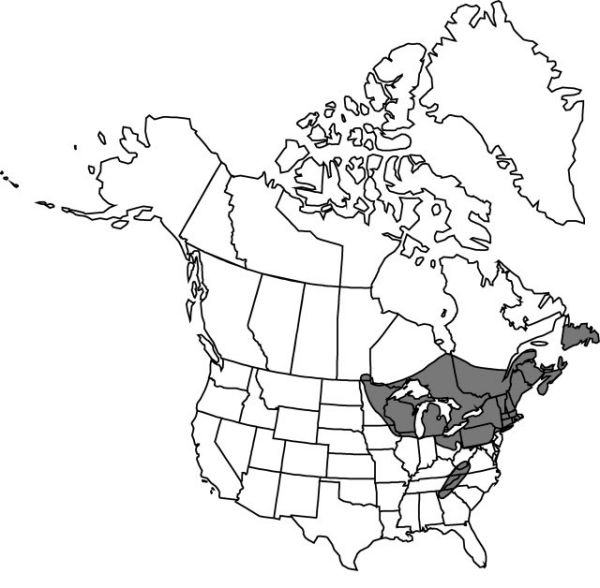Platanthera psycodes
Gen. Sp. Orchid. Pl., 294. 1835.
Plants 14–101 cm. Leaves 2–5, widespreading, recurved to somewhat ascending, scattered along stem, gradually reduced to bracts distally; blade lanceolate, oblongelliptic, or oblong-obovate, 5–22 × 1.5–7 cm. Spikes lax to very dense. Flowers resupinate, showy, lavender to rose-purple, rarely white; lateral sepals reflexed to somewhat spreading; petals spatulate to broadly obovate or cuneate-oblong, margins dentate-lacerate to sparsely fringed; lip descending to somewhat porrect, deeply 3-lobed, without basal thickening, 5–13 × 5–17 mm, distal margins of lobes fringed, sometimes deeply, lateral lobes often reflexed or slightly elevated above middle lobe, broadly to narrowly cuneate, middle lobe sometimes reflexed, broadly cuneate-flabellate, often emarginate to 2-fid; spur slenderly cylindric to slightly clavate, 12–22 mm; rostellum lobes nearly parallel, directed downward, short, rounded; pollinaria nearly straight; pollinia remaining enclosed within anther sacs; viscidia suborbiculate to broadly elliptic; ovary slender to stout, 9–16 mm. 2n = 42.
Phenology: Flowering Jun–Aug(–Sep).
Habitat: Alluvial and swamp forests, stream banks, riparian meadows, moist and seeping slopes, marshes, roadside banks, ditches, old fields
Elevation: 0–2000 m
Distribution

Man., N.B., Nfld. and Labr. (Nfld.), N.S., Ont., P.E.I., Que., Conn., Ga., Ill., Ind., Iowa, Ky., Maine, Mass., Mich., Minn., N.H., N.J., N.Y., N.C., Ohio, Pa., R.I., Tenn., Vt., Va., W.Va., Wis.
Discussion
Platanthera psycodes is known to hybridize with P. lacera in the northeasternmost portion of its range, where the species bloom simultaneously. Such hybrids are known as P. ×andrewsii (M. White) Luer; see the discussion under P. lacera. A few specimens also suggest very rare hybridization with P. grandiflora.
Selected References
None.